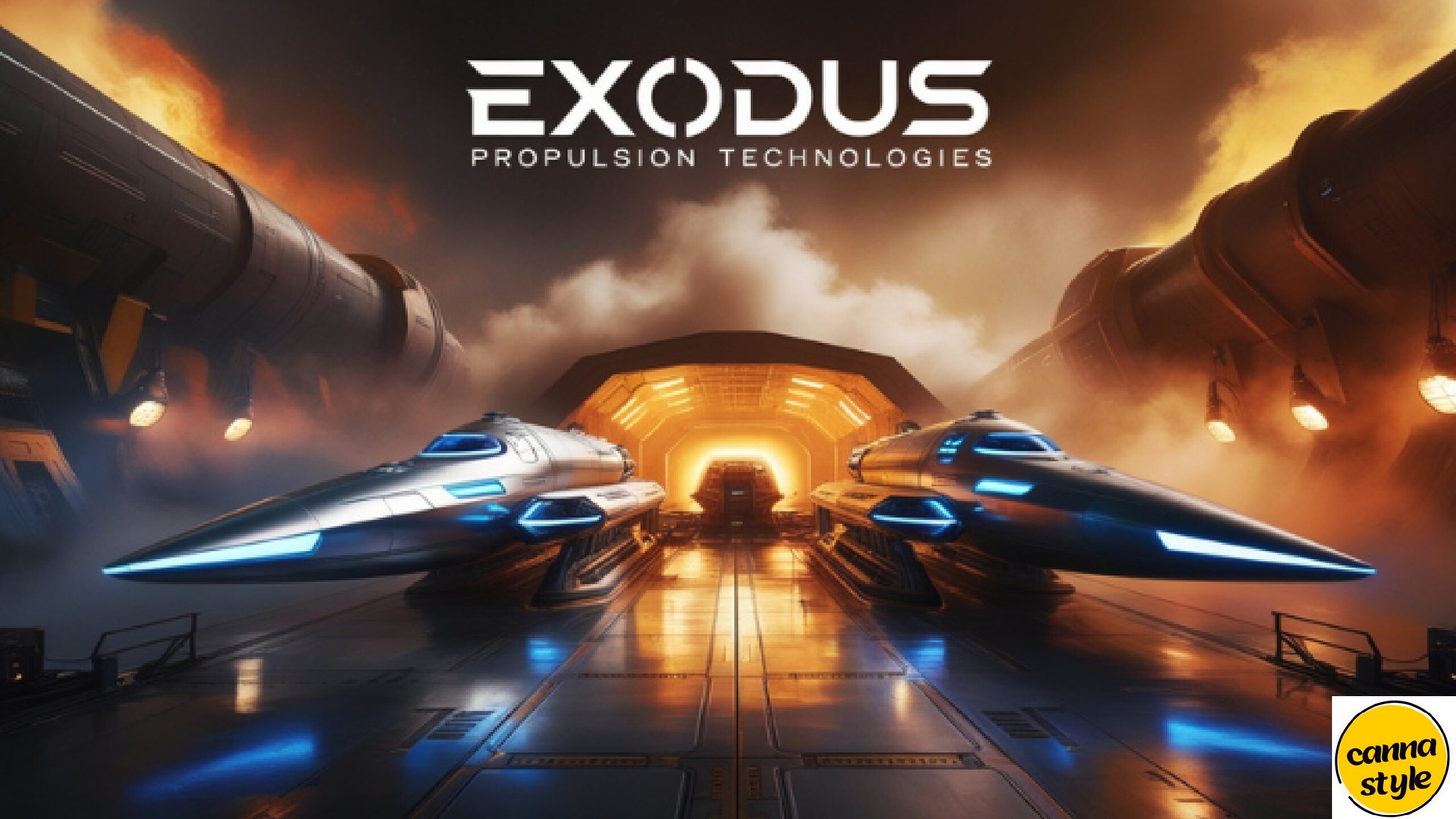Exodus propulsion technologies represent a transformative bounce within the area of area exploration and transportation. These technologies intend to push the limits of our abilities, making interstellar journeys and superior area missions greater possible. This article explores the state-of-the-art improvements and breakthroughs in Exodus propulsion technology, delving into their improvement, programs, and future possibilities.
Introduction
Understanding Exodus Propulsion Technologies
Exodus propulsion technologies are designed to enhance the efficiency and variety of space journeys. They include contemporary strategies and structures that promise to revolutionize how we explore space, journey to remote planets, and possibly assignment beyond our sun system.
The Significance of Innovation in Space Travel
Advancements in the propulsion era are essential for expanding our attain in space. As we aim for longer missions and bold locations, those innovations are key to overcoming modern-day boundaries and accomplishing new milestones in space exploration.
Historical Context of Propulsion Technologies
Early Space Propulsion Systems
Chemical Propulsion
Chemical propulsion, using rockets powered by means of chemical reactions, has been the cornerstone of space journey for the reason that early area age. While powerful, its boundaries encompass noticeably low performance and excessive gasoline consumption.
Nuclear Thermal Propulsion
Nuclear thermal propulsion changed into explored throughout the 1960s and Nineteen Seventies, presenting advanced efficiency via the use of nuclear reactors to warmth propellants. However, political and technical demanding situations hindered its great adoption.
Evolution to Modern Propulsion Technologies
Electric Propulsion
Electric propulsion structures, such as ion thrusters, provide better performance and thrust over extended intervals. These systems use electric powered fields to accelerate ions and generate thrust, making them ideal for lengthy-length area missions.
Advanced Propulsion Concepts
Recent advancements have introduced new concepts, such as nuclear electric propulsion and hybrid systems, combining various technologies to optimize performance and efficiency.
Innovations in Exodus Propulsion Technologies
Breakthroughs in Propellant Technologies
Green Propellants
Green propellants, designed to replace traditional poisonous propellants, provide more secure and more environmentally friendly options. Innovations in this area focus on improving overall performance whilst decreasing environmental impact.
Advanced Propellant Manufacturing
New manufacturing techniques are allowing the manufacturing of more efficient and better-overall performance propellants. These improvements encompass the development of high-electricity-density materials and progressed chemical methods.
Propulsion Systems and Mechanisms
Next-Generation Ion Thrusters
Modern ion thrusters, which include Hall-impact thrusters and gridded ion engines, provide tremendous upgrades in thrust and efficiency. These next-technology systems offer more suitable overall performance for deep-area missions.
Magnetic Propulsion
Magnetic propulsion structures, which include ideas like the electromagnetic sail (E-sail), use magnetic fields to generate thrust. This progressive technique promises to lessen the need for conventional propellants and allow faster tours throughout the sun system.
Revolutionary Power Sources
Advanced Nuclear Propulsion
Recent developments in nuclear propulsion awareness on compact and excessive-performance reactors. These advanced nuclear systems are designed to offer energy for deep-space missions and lengthy-length spaceflights.
Fusion Propulsion
Fusion propulsion, harnessing the power of nuclear fusion reactions, represents a capability leap forward for interstellar travel. Ongoing research pursuits to acquire controlled fusion and broaden sensible fusion propulsion systems.
Applications of Exodus Propulsion Technologies
Interplanetary Travel
Mars and Beyond
Exodus propulsion technologies offer the ability for more green journeys to Mars and different planets. Advanced propulsion systems can lessen travel time, decorate undertaking competencies, and guide crewed missions to remote worlds.
Asteroid Mining and Exploration
Efficient propulsion technologies are vital for asteroid mining and exploration. This technology allows missions to reach and go back from asteroids, facilitating aid extraction and scientific research.
Deep-Space Missions
Voyager-Class Missions
Exodus propulsion technology may want to allow missions much like the Voyager spacecraft, extending past our solar system to discover interstellar space. These systems might facilitate longer and bolder deep-space missions.
Exoplanet Exploration
Advanced propulsion technology is crucial for missions concentrated on exoplanets in different big-name systems. Enhanced propulsion competencies will allow us to reach those distant worlds and look for symptoms of life.
Challenges and Considerations
Technical and Engineering Hurdles
Development Costs
Developing advanced propulsion technology includes great research and improvement costs. Funding and funding are important to advancing those technologies and overcoming technical challenges.
Engineering Complexity
Designing and building subsequent-technology propulsion systems requires overcoming complicated engineering challenges. Ensuring reliability and protection in these systems is a crucial attention.
Ethical and Environmental Impact
Space Debris Management
As propulsion technologies increase, coping with area debris turns into increasingly more vital. Ensuring that new systems do no longer make a contribution to the developing trouble of space debris is vital for sustainable space exploration.
Environmental Considerations
The environmental impact of propulsion technologies, both on Earth and in space, needs to be cautiously assessed. Developing environmentally pleasant and sustainable technologies is a key aim.
Future Prospects
Emerging Trends
Hybrid Propulsion Systems
Hybrid propulsion systems, combining exclusive technology, are rising as a promising technique for optimizing performance and efficiency. These systems leverage the strengths of more than one propulsion methods.
Artificial Intelligence in Propulsion
Artificial intelligence (AI) is anticipated to play a sizable role in optimizing propulsion structures and handling complicated space missions. AI can decorate manipulate, tracking, and decision-making methods.
Long-Term Goals and Visions
Interstellar Travel
The ultimate goal of Exodus propulsion technologies is to make interstellar travel feasible. Research and development in this area focus on achieving the necessary speed and efficiency for travel between stars.
Space Colonization
Advanced propulsion technologies are fundamental to the imagination and prescient of space colonization. Efficient and reliable structures will aid the established order of human settlements on other planets and celestial bodies.
Conclusion
Summary of Innovations and Breakthroughs
Exodus propulsion technologies represent a full-size advancement in space travel, providing new possibilities for exploration and missions beyond our solar system. Innovations in propellants, propulsion systems, and strength assets are using these improvements.
Looking Ahead
The persistent improvement of propulsion technology is important for reaching the ambitious goals of area exploration and colonization. As research progresses, that technology will release new frontiers and shape the future of space tours.
FAQs
What are Exodus propulsion technologies?
Exodus propulsion technologies are advanced systems and methods designed to enhance the efficiency and range of space travel. They include innovations in propellants, propulsion mechanisms, and power sources.
How do next-generation ion thrusters improve space travel?
Next-generation ion thrusters, such as Hall-effect thrusters and gridded ion engines, offer increased thrust and efficiency for long-duration space missions. They utilize electric fields to accelerate ions, providing a more effective means of propulsion.
What is the potential of fusion propulsion for space travel?
Fusion propulsion holds the potential for achieving high-speed interstellar travel by harnessing the energy of nuclear fusion reactions. Ongoing research aims to develop practical fusion propulsion systems for future space missions.
What challenges are associated with advanced propulsion technologies?
Challenges include high development costs, engineering complexity, and the need for sustainable and environmentally friendly solutions. Addressing these issues is crucial for advancing propulsion technologies and achieving space exploration goals.







